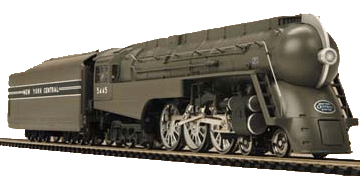|
|
 Posted - February 17 2014 : 08:12:00 AM Posted - February 17 2014 : 08:12:00 AM




|
After putting on my last sanding drum - I realized I had no idea what type (grit#) it is, and really if it was the best type to use anyway.
Browsing the offerings on ebay, there are many types - 120, 240...etc.
Anyone here have a favorite all around type? I use mine more like a fine grinder than anything else.
http://tycodepot.com/
|
|
|
|
|
 Posted - February 17 2014 : 11:02:18 AM Posted - February 17 2014 : 11:02:18 AM






|
quote: on my last sanding drum - I had no idea what type (grit#) it is, and really if it was the best type to use anyway.
I use mine more like a fine grinder than anything else.
Originally posted by JNXT 7707 - February 17 2014 :  08:12:00 AM
|
I guess it depends on what you're using it for. Metal-work? Deburring? Hard-core material removal? track cleaning?  Obviously finer grits for fine work, and coarse for heavy-duty material removal. I really don't use drum sanders myself, as i haven't gotten into anything that would need them. I use cut-off wheels more than any other Dremel tool, followed by the tiny wire wheels. And drill bits. But since you don't specifically say what you're doing, it's hard to make a choice of what grit to use from a limited description like that. What exactly are you doing with them? Give us a few examples. Obviously finer grits for fine work, and coarse for heavy-duty material removal. I really don't use drum sanders myself, as i haven't gotten into anything that would need them. I use cut-off wheels more than any other Dremel tool, followed by the tiny wire wheels. And drill bits. But since you don't specifically say what you're doing, it's hard to make a choice of what grit to use from a limited description like that. What exactly are you doing with them? Give us a few examples.
Jerry
" When life throws you bananas...it's easy to slip up"
|
Country:  USA ~
Posts: 3974 ~
Member Since: January 04 2009 ~
Last Visit: January 11 2019 USA ~
Posts: 3974 ~
Member Since: January 04 2009 ~
Last Visit: January 11 2019
|
 Alert Moderator
Alert Moderator

|
|
|
|
 Posted - February 17 2014 : 11:42:03 AM Posted - February 17 2014 : 11:42:03 AM




|
Jerry - I use these things mostly to remove excess (plastic) material. Like for example, when needing to flatten the surface of the bottom of a car end, where there may be ridges. Would be tedious to hand file these down, so I use the sanding drum to get 90% of it and then hand file the rest. Rarely, if ever, used to "sand" surfaces in the traditional sense where you are trying to finely smooth something. So I'm sure it's a pretty robust grit I've been using, but the problem is I don't know my grit #s when scanning over the sanding drums online. These drums I have been using came in the assortment of attachments with the Dremel.
The more I think about it, the more I'm thinking it's an unanswerable question!
"Not too rough, not too smooth....but just right" 
http://tycodepot.com/
|
|
|
|
|
 Posted - February 17 2014 : 1:55:46 PM Posted - February 17 2014 : 1:55:46 PM




|
Here's a Wikipedia article about sand paper that has a chart in it explaining grit sizes in a way that may help you to pick the right one:
http://en.wikipedia.org/wiki/Sandpaper
What you're doing doesn't sound so critical that only one side would work, but if your goal is to remove plastic quickly, I would think a larger size (meaning smaller number) would cut faster and clog more slowly.
Carpe Manana!
|
Country:  USA ~
Posts: 2411 ~
Member Since: September 17 2013 ~
Last Visit: December 12 2025 USA ~
Posts: 2411 ~
Member Since: September 17 2013 ~
Last Visit: December 12 2025
|
 Alert Moderator
Alert Moderator

|
|
|
|
 Posted - February 17 2014 : 6:14:23 PM Posted - February 17 2014 : 6:14:23 PM




|
Thank you sshaggy - looking at that article and pics of the dremel bands I'm thinking it is going to be a coarse grit like a 60.
http://tycodepot.com/
|
|
|

